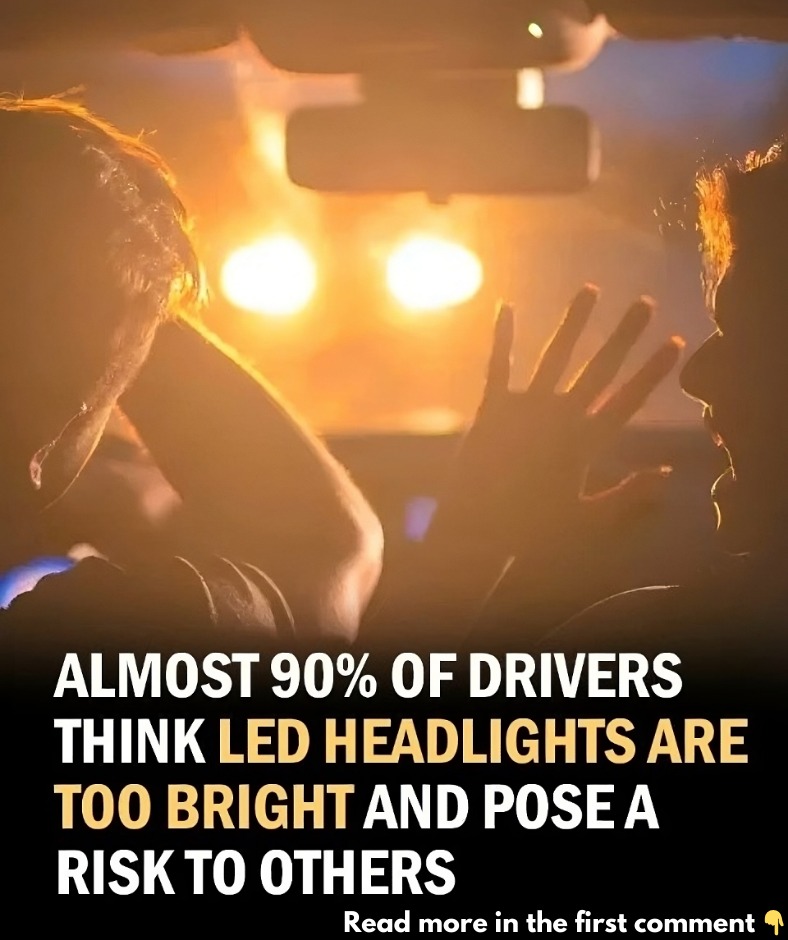LED headlights have been hailed as a game-changer in the automotive industry, offering superior illumination, energy efficiency, and long-lasting durability. Their introduction brought a wave of excitement as drivers appreciated clearer visibility and modern technology on the road. However, what once seemed like a significant innovation has recently faced growing criticism. Many drivers now claim that LED headlights are excessively bright, raising concerns about safety and discomfort during nighttime driving. This article explores the root of the problem, the real-world impact, and potential solutions to balance visibility with driver comfort.

Why Are Drivers Frustrated?
While LED headlights undoubtedly improve visibility for drivers, their intense brightness can create serious issues. A survey conducted by the RAC in the UK found that 89% of drivers feel LED headlights are too bright, and 85% believe the problem has worsened over the years.
Similar sentiments are echoed in the United States. Victor Morgan, a mechanical engineer who conducted independent tests, discovered that real-world glare levels from LED headlights often exceed regulatory limits. For many drivers, this brightness isn’t just an inconvenience—it’s a significant safety hazard.
The Pros and Cons of LED Headlights
When LED headlights first appeared on the market, they were praised for their numerous advantages:
- Enhanced Visibility: Their focused beams allow drivers to see farther at night, reducing the risk of accidents.
- Energy Efficiency: LEDs consume less energy compared to traditional halogen bulbs, making them more environmentally friendly.
- Longevity: These headlights last much longer than conventional bulbs, reducing the need for frequent replacements.
Despite these benefits, their intense brightness has introduced new challenges. The highly concentrated beams can temporarily blind oncoming drivers, especially on dark roads. This unintended consequence has sparked widespread frustration and calls for change.
Misaligned Headlights: The Overlooked Culprit
A significant contributor to the glare problem is misaligned headlights. Mark Rea from the Light and Health Research Center explains that improperly adjusted headlights, particularly on taller vehicles like SUVs and trucks, amplify the glare experienced by drivers in smaller cars.
“It’s not every car,” Rea notes, “but about 20% of vehicles have glaring issues.” Misalignment not only causes discomfort but also increases the likelihood of accidents by reducing focus and slowing reaction times for affected drivers.
The Real-World Impact of LED Brightness
Drivers facing excessively bright headlights report several challenges that impact both safety and convenience:
- Slower Reaction Times: Many drivers reduce their speed on poorly lit roads to cope with the glare, potentially increasing travel times and accident risks.
- Increased Use of Night Driving Glasses: The discomfort has led some to invest in specialized glasses designed to reduce glare. While these glasses can help, they do not address the underlying issue.
Calls for Regulatory Intervention
The growing backlash has prompted experts and advocacy groups to call for regulatory action. Organizations like the National Highway Traffic Safety Administration (NHTSA) in the U.S. are being urged to revisit their guidelines for headlight brightness. Current regulations are often criticized for failing to account for real-world driving conditions, leaving drivers vulnerable to excessive glare.
Mark Baker, president of the Soft Lights Foundation, succinctly captures the sentiment: “Everyone is mystified by why they are being blinded.” In the UK, 64% of drivers believe the brightness of LED headlights increases accident risks, highlighting the urgent need for regulatory reform.
Potential Solutions for Safer Roads
Several strategies can help mitigate the glare problem and ensure safer nighttime driving:
- Adaptive Lighting Technologies:
Advanced lighting systems can automatically adjust the brightness and direction of headlights based on road conditions. For instance, these systems can dim the lights when detecting oncoming vehicles. While promising, adaptive lighting is not yet widespread due to its high cost and limited availability. - Regular Headlight Alignment:
Vehicle owners can play a role in reducing glare by ensuring their headlights are properly aligned. Regular maintenance checks can significantly minimize discomfort for other drivers. - Stricter Manufacturing Standards:
Automakers can design headlights with stricter controls on beam angles and brightness levels. By prioritizing a balance between visibility and comfort, manufacturers can create safer lighting systems.
What Drivers Can Do
While long-term solutions are being developed, individual drivers can take steps to reduce glare and promote safer driving conditions:
- Check Headlight Alignment: Misaligned headlights are a major source of glare, particularly on taller vehicles like trucks and SUVs. Regularly inspecting and adjusting them can make a big difference.
- Use Low Beams Appropriately: High beams are unnecessary in well-lit areas and can worsen glare for oncoming drivers.
- Avoid Aftermarket LED Bulbs: Installing overly bright or improperly designed bulbs can exacerbate the issue and create additional safety concerns.
Conclusion: Balancing Brightness and Safety
LED headlights were introduced to enhance safety and visibility, but their unintended brightness has created new challenges for drivers worldwide. Addressing these issues requires a collaborative effort from regulators, manufacturers, and drivers alike. By implementing adaptive technologies, maintaining proper headlight alignment, and revising manufacturing standards, we can create a safer and more comfortable driving experience for everyone.
Until these changes become widespread, drivers must remain vigilant and take responsibility for reducing glare whenever possible. Bright lights should illuminate the road ahead, not blind those who share it. With a thoughtful approach, the automotive industry can strike the right balance between innovation and safety, ensuring LED headlights live up to their promise of enhancing the driving experience.





